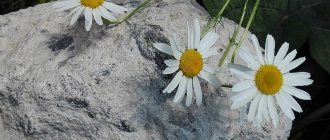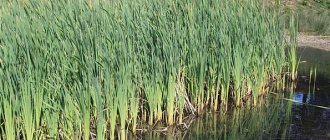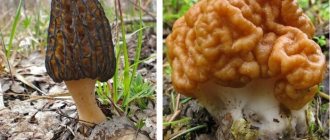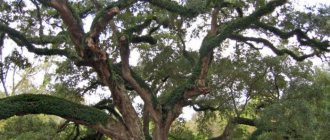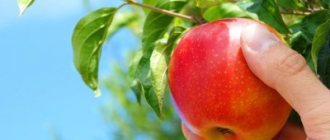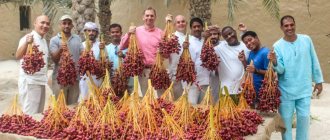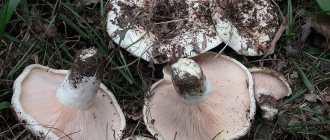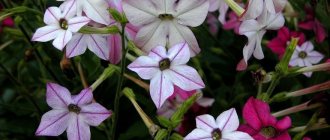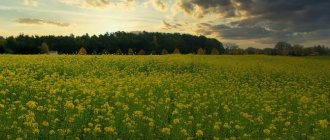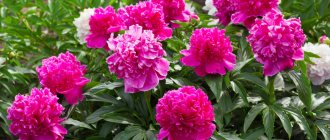- July 10, 2019
- Trees and shrubs
- Rezeda Zaripova
This deciduous heat-loving plant, which has excellent decorative qualities, is a real decoration of garden plots and urban park areas from spring until late autumn.
However, you should know that, in addition to varieties of the Chestnut genus, other plants from other families can also be called “chestnuts,” for example:
- Australian chestnut, or southern castanospermum, is a plant belonging to the legume family.
- Horse chestnut (also aesculus, or acorn) is a plant of the Sapindaceae family.
The article provides a detailed description of chestnut: origin, characteristics of growth and cultivation, beneficial properties, application, etc.
About the origin of the plant
According to scientists, the chestnut tree (see photo in the article) existed back in the days of the first ape-men (Tertiary period). The distribution area in those days was much wider than it is now. It is known that the plant grew in North America, Greenland, Sakhalin and the Mediterranean (subtropical shores). The Caucasus, Asia Minor and the Balkan Peninsula are considered the birthplace of the nut.
This ornamental plant was first brought to Europe in the 15th century from Istanbul by the famous botanist Lucluz, who began to grow it in Vienna from the chestnut nuts he brought. Over time, this attractive tree began to be widely used in landscaping urban landscapes and private gardens. The fruits were used as livestock feed. The healing properties of chestnut were discovered by scientists only in the 20th century.
Flowering of different types of chestnut
Today a large number of different varieties are known. Each of them differs in its characteristics, content or area where its fruits or other parts of the tree are used. But they are united by the typical flowering period for all.
At this time, amazing flowers bloom from the buds, from which it is impossible to take your eyes off. The smell will quickly fill the entire space around, leaving no one indifferent.
The table below shows the types of flowering chestnuts, as well as their distinctive features.
| Chestnut name | What is characteristic of a tree |
| Sowing | Flowering can occur in conditions where there is high humidity and frequent rain. In autumn, edible nuts are collected, which have a sweetish taste. The fruits are often used to produce a variety of sweets and jams. |
| Horse | The tree is found in almost all countries of the world. It blooms very beautifully, so it is used only as an ornamental plant, the fruits of which are unsuitable for human consumption. In the old days they were fed to horses and other large livestock, hence the name of the plant. |
| Australian | The history of the plant goes back to Australia, where it was brought by emigrants during the gold rush era. The variety differs from other species in its ideal shape and bright emerald smooth leaves. Various jams are usually prepared from the fruits. |
| Japanese | It is characterized by early flowering. The tree blooms for the first time already in the second year of its life. It is suitable for a humid climate and clay soil. Therefore, the plant is found in mountainous areas in Japan. |
| Chinese | Despite its name, the chestnut tree is found not only in China, but also in Vietnam and Korea. It forms entire forests. Plants begin to bloom only 5 years after the seedling is planted in soil enriched with calcium. |
| Red | The tree is a rather rare species. It is very fragile and therefore needs special care. The plant performs a decorative function and is often found in parks and gardens. During the flowering period, bright pink flowers quickly appear from the buds, which have a pleasant aroma. |
| Guinean | It can be found almost throughout Central America. The tree grows mainly in tropical forests. To make them bloom faster, you need to provide the trees with a large amount of water. This type of chestnut is also found in Russia. Here it is a houseplant that does not reach large sizes and can easily be placed in a regular flowerpot. In such conditions, the tree very rarely blooms. |
| Smooth | The fruits of the tree are inedible, but the plant itself will always delight the human eye with very beautiful flowering. You can watch it in North America, Central Asia, as well as some European countries. |
| Forest | The plant begins its history in Turkey. Somewhat later, it began to appear on the European part of the continent. Today the tree is especially popular in the USA. National parks, gardens and various recreation areas are planted with this species. When the first flowers bloom on the tree, it will immediately win the attention of all the people around with the beauty of its flowers, and a pleasant chestnut aroma will appear on the streets. |
Interesting!
Each chestnut blooms differently, but none of them can leave anyone indifferent. Walking along the street, which is planted with these trees, you can immediately plunge into the romantic atmosphere. It will cheer you up and make you enjoy every little thing that a person does not notice in the frantic rhythm of modern life.
Places of growth
Chestnut grows in the Northern Hemisphere, in three isolated regions - in East Asia, the Mediterranean and the USA (on the Atlantic coast).
In its wild form, the chestnut tree (a photo of the plant in its natural growing conditions is presented above) today can be found in Greece, India, Southern Europe, Bulgaria, Albania, the Balkan Peninsula and Serbia. On an industrial scale, the plant is widely cultivated in Japan, Europe and China.
Today, chestnut is found not only in its native lands, but also in the southern regions of Russia. These trees grow on city boulevards and streets, in squares and on the central alleys of cities. In the wild they grow on shaded mountain slopes with medium-moist brown soils. They do not tolerate wet or dry soils.
How fast does chestnut grow?
In order to grow a tree that will have a good root system for a rich harvest, you need to follow a few simple recommendations (how to plant a chestnut from a walnut). These include:
- The soil.
The tree prefers to be in the ground, containing silicon or limestone. The main thing is that there is no clay in it. It does not like to feel isolated or apart, but other cultures in its shadow will not be able to fully grow and develop. This should be taken into account before planting plants next to each other in a small area of a park or garden. The soil where chestnut blooms must be fresh. The tree does not like excessive waterlogging. - Climate.
A temperate climate is suitable for growing chestnuts. They do not tolerate severe frosts or prolonged drought. The chestnut root system is not designed for such extreme conditions.
Carefully!
The tree can withstand air temperatures down to minus 20 degrees or, conversely, too high a temperature for a short period of time. If this period drags on, the plant will simply die.
Varieties
There are 10 species of this plant in total. In central Russia, chestnut species that are characterized by good resistance to sub-zero temperatures are used for planting. Severe frosts (down to -30 ° C) can withstand such species as European (sowing, noble), American (toothed). It should be remembered that they all belong to the beech family.
The bark of the American chestnut is brown, the shoots are yellow and bare, and the foliage is dark green. Chestnut flowers sit in spike-shaped inflorescences (length - 20 centimeters). The fruits, covered with bright green fluff, are edible.
European chestnut is distinguished by the presence of a ribbed surface of shoots in olive and red shades. Along the edges of the oblong leaves, crescent-shaped teeth appear. The underside of the foliage is covered with bluish fluff. The inflorescences are spike-shaped and reach a length of up to 35 centimeters. The rather large fruits are edible.
Peculiarities of propagation of chestnut from walnut
As I already mentioned, the method of growing chestnuts from walnuts is very attractive. This will be your tree, which you grew yourself from a small chestnut tree. It's not difficult to do this. You will need, in fact, only fully ripened fruits and time - about 3-4 years. Which fruits are suitable for our purposes:
- fallen to the ground themselves,
- whole,
- undamaged,
- no traces of disease or rodent damage,
- without traces of rot.
In the fall, collect several ripe chestnuts and place them in a covered container with wet sand. This is how artificial stratification is carried out (without it, the chestnut will not sprout). The chestnut should lie in the sand for some time, for example, until spring. Everything is like in nature! Indeed, under natural conditions, the chestnut fruit rests in cool soil before germinating.
Closer to spring, you can get a nut and soak it in warm water (this is an imitation of warm spring rains). The water needs to be changed from time to time (monitor the condition). When the nut has a softened peel, you can plant it in a pot.
The tree will soon sprout, and with the first warm days you can put it in the sun, in the yard. If you live in a warm climate, the chestnut tree can grow in a pot and spend the winter in a greenhouse for the first three years.
If you live in the middle zone, then it is advisable to grow the chestnut to a more mature state - it should winter in a greenhouse for about 5 years. But no more! The chestnut must harden and get used to external conditions.
In summer, it is advisable to water the young tree with soft water, loosen the soil, and feed it. Mature chestnuts do not require such care, but in case of drought, it is advisable to water the tree additionally (in the evening).
It is advisable to fertilize in early spring; cow manure is perfect. Also in the fall, chestnuts are prepared for wintering by feeding them with a special mixture: 15 g of nitroammophoska per 10 liters of water.
If you wish, you can prune the chestnut to form a symmetrical crown; it takes pruning well.
Description of the tree
The height of chestnut, a deciduous tree, can reach up to 25 meters.
Its trunk is straight and slender, brown-gray in color. It can reach up to 100 centimeters in diameter. The tree has a fairly powerful root system with a tap root. Thanks to the strong branching of the lateral roots, the plant is resistant to strong gusty winds.
Details
Origin and growth characteristics
Chestnut growing area
Today, this plant is quite common in temperate or subtropical climates and is mainly presented in the form of cultivated plantings. Under natural conditions, chestnut is most often found in North American areas, much less often in the mountain forests of Asia and India. 2 of the large number of existing species can be seen in Southern Europe.
Horse chestnut is cultivated in Europe and has been grown as an ornamental deciduous tree since the beginning of the 16th century.
Interesting! Back in 1575, a botanist from Austria began growing chestnuts from seeds taken in Turkey. He planted them in Vienna. 30 years after this event, horse chestnut appeared in France and subsequently spread throughout Europe and North America.
Circumstances affecting the flowering period of horse chestnut
There are times when the aroma of horse chestnut is not heard at all on the streets of the city. This happens mainly due to a violation of natural processes, which are contained in the rules for caring for the plant.
First of all, the presence of flowering is influenced by the following factors:
- Plant age. Most chestnut trees begin to bloom after they reach ten years of age, but there are some varieties that mature even later. That is why young trees do not please owners and townspeople with their fragrant flowering.
- Lack of space. It's no secret that chestnut trees take up a lot of space when mature. That is why for high-quality development and intensive growth, including flowering, one specimen must be provided with free territory. It is best to create a free radius of 6 m in each direction from the trunk.
- Unsuitable growing temperature. These indicators are especially important if edible chestnuts are grown. The formation of fruits is possible only after the end of the flowering period, and it is possible to enter this phase at a temperature of 13-18 degrees Celsius. If it is much colder outside, the chestnut will not begin to bloom and, therefore, will not form fruits.
Interesting! An ordinary horse chestnut with standard fruits can bloom under any conditions. It is not afraid of dry conditions and winter frosts, even if they are short-lived.
Varieties of horse chestnut
The most decorative appearance is the pink horse chestnut, as well as its subspecies, ordinary and small-flowered.
Horse chestnut is meat-red . This tree is distinguished by the presence of a lush crown in a cone shape and grows in height up to 10 m. During flowering, pink buds are formed, collected in inflorescences. The leaf blades consist of 5 palmate lobes of dark green color.
This variety is mainly used to decorate industrial and urban areas as it develops well even in the presence of polluted air.
The subspecies have a spherical crown, capable of growing in diameter up to 8 m. All these varieties do not exceed 15 m in height and develop best under favorable conditions. The formed inflorescences are approximately 25 cm long and consist of bright red bell-shaped flowers. These varieties of chestnut are quite unpretentious, so they are often used for decorating areas.
Common horse chestnut . This is the largest variety, reaching a height of 25 m and having a leaf crown diameter of 20 m. In adult specimens of this plant, the lateral branches sometimes bend towards the ground. During flowering, inflorescences 35 cm long with white flowers are formed. Planting of this variety is done both in the form of a tapeworm and in groups, but if there is sufficient space. During flowering, the common horse chestnut is a good honey plant.
Small-flowered horse chestnut . This variety has the form of a bush with many side shoots. The bush grows to a height of 5 m. The flowering period differs from other varieties in the presence of pronounced stamens on the buds in a bright pink hue. The leaf blades of the varieties also have obvious differences and consist of 5 oval leaves with small teeth along the edges. This is a rather capricious variety of chestnut that grows well only in warm climates with fertilized and moist soil.
Indian chestnut is called that way because of the habitat in which it grows. The trees are most often found in the northern part of India. The leaf blades grow in a wedge-shaped shape, and the flowers are colored in interesting shades. Their main color is white, but with splashes of red, pink and yellow.
Red chestnut grows up to 12 m in height and is mainly found in North America. The leaves of this tree also consist of 5 lobes, each of which has short hairs. The flowering is quite bright and makes the tree even more noticeable during this period. The buds are colored red, which influenced the name of the variety.
Japanese chestnut grows naturally throughout Japan and is similar in appearance to the classic variety. The only difference is the length of the sheet plates, which are slightly larger. The height of the tree reaches 30 m; flowering is accompanied by the formation of inflorescences in yellow-white shades.
How to grow horse chestnut on a plot?
Every gardener who has experience in growing plant crops has the opportunity to plant a beautiful deciduous tree on his own territory. To do this, you must follow certain rules and some care requirements.
Important! Before planting chestnut seedlings, you need to understand that they need enough space. Over time, the crown will form over a large area, and its volume will be comparable to the root system. Each tree must be planted at a distance of at least 5 m from any building or other plant.
In the future, caring for the chestnut consists of providing the necessary conditions. Often, it is rarely possible to grow other plants under such a spreading crown, so it is quite possible to create a comfortable place to relax under a tree.
In the classic version, the chestnut must be protected from strong drafts and provided with good lighting. In general, this plant is shade-tolerant, but requires sunlight for high-quality flowering.
The absence of drafts and strong gusts of wind can guarantee the formation of an even and regular trunk. Also, this requires sufficient territory, because the formation of a powerful root system will be the key to good immunity.
Chestnut seedlings are planted with the onset of spring, when the soil has completely warmed up. It is not recommended to do this in the fall, because the root system can be damaged by rodents.
For planting, it is necessary to prepare soil with a slightly acidic reaction and nutritional properties. Chestnut also feels good on loamy and black soil soils. The plant is not recommended for high soil density, because the young root system will not be able to develop well enough. When planting, you should initially create a high-quality drainage layer that will prevent excess moisture.
Care also consists of regular weeding, especially while the plant is young. Timely pruning allows the horse chestnut to grow a spreading and lush crown. To do this, every spring, 1/4 of the length of the side shoots is cut off, while the summer branches are not touched. Similar manipulations are carried out until the plant reaches the required height and age.
In the future, you will only need sanitary pruning, during which damaged or dried branches are removed; you can also cut off old side shoots.
It is necessary to protect horse chestnut in winter for the first 3 years after planting. At this time, the tree trunk circle is mulched, and the trunks themselves are covered with non-woven material or burlap, which avoids the appearance of cracks on the young tree.
How to choose seedlings and planting algorithm
Seedlings that have reached three years of age or older must be planted in any area. The first transplant is possible only after reaching 10 years of age. When purchasing, young plants must have a healthy appearance, a well-formed root system without painful features, and live buds on the side shoots.
The landing algorithm consists of the following steps:
- for each plant it is necessary to prepare a cube-shaped planting hole dug to a depth of 60 cm;
- the bottom of the pit is covered with a drainage layer consisting of sand, small crushed stone, humus, soil and dolomite flour;
- when deepening a seedling, do not cover the root collar;
- the hole itself should be slightly higher, because after watering the soil will settle and the trunk will be partially exposed;
- planting is accompanied by abundant watering and installation of a support, which can be removed after the tree gets stronger.
Important! Mature chestnuts easily tolerate a lack of moisture, so they need to be watered only in intense heat and during a long absence of precipitation. Regular watering is important only for young horse chestnuts.
How to propagate horse chestnut?
The most suitable time for reproduction is spring or autumn. In nature, fallen seeds germinate on their own without additional intervention, but when planting, you must follow these recommendations:
- seed collection is accompanied by further cold storage for 10 days;
- Chestnut seeds are planted in open areas when they are deepened by 6 cm.
- the planting distance is maintained within 15 cm;
- After deepening, the soil surface is covered with dry leaves for the winter.
- in the spring, when the first shoots appear, they need to be thinned out, leaving the most persistent ones.
In the case of spring planting, all procedures are carried out in the same sequence, but the nuts are placed in deep boxes, which are kept all winter in basement conditions. Before planting the seeds, in this case they are left for 5 days in warm water. After germination, chestnut seedlings are moved to open ground.
Leaves
The large and compound leaves of the chestnut tree are five- or seven-fingered, with a long spine. In the summer, their color is green, and by autumn they acquire yellow-brown, crimson, brown and purple shades. Chestnut greens contain vitamin K, tannins and pectin. In folk medicine, the foliage is used in the preparation of decoctions and infusions used for a variety of diseases.
The crown of the chestnut tree, thanks to its large openwork leaves, is very wide and dense, having a rounded shape.
Description
Chestnut not only pleases with its beauty, but also helps maintain our health. Researchers from the Stockholm Biochemical Institute claim that one chestnut can clean 20 thousand cubic meters of air from car exhaust gases without losing its decorative value.
Therefore, horse chestnut is increasingly planted on the streets and squares of cities, in gardens and parks.
For this purpose, decorative forms of chestnut - spherical, columnar, pyramidal, weeping, with yellow, white-variegated, pink, red and double flowers, variegated and golden leaves.
Life form:
Crown:
Growth rate:
Fast. The annual growth is 50 cm in height and 50 cm in width.
Height 20 m, crown diameter 20 m.
Funnel-shaped up to 2 cm, white, with red specks, in large inflorescences 20-30 cm long.
Composite, consisting of 5-7 oblong leaves, 10-20 cm, green in spring and summer, yellow in autumn.
Decorativeness:
The common horse chestnut is very beautiful during spring flowering.
Usage:
Alleys, single plantings, decorative groups.
to the light: photophilous
to moisture: medium-demanding
to soil: not picky
to temperature: frost-resistant
Flowers
In what month do chestnuts bloom? The flowering period depends on the type of tree and location. The most common species in Russia is the sowing chestnut, which is an excellent honey plant and blooms in early May.
The tree looks great during the flowering period. Fragrant large inflorescences resemble candles, arranged vertically and scattered throughout the crown. The length of the spike-shaped, pyramidal inflorescences is 10-35 cm. The lower part is represented by female flowers, the upper part by male ones.
Chestnut flowers are unique in their structure, each of which has a five- or eight-membered perianth. Flowers, depending on the type and variety, can be pink, white and red.
How does chestnut grow?
The tree has a powerful tall trunk, surrounded by a dense crown. Usually it has a round shape. It is difficult for other crops to survive in the shade of the plant, so chestnut is grown in places where people relax, where it is necessary to create a cozy place that will be a real salvation from the summer heat or light rain.
Most often, chestnut is planted in various parks. An adult tree grows up to several tens of meters in height, which adds a kind of grandeur to the image. Due to this, it will become a real decoration of the garden, park or other place where the seedling was planted.
Congratulations!
The chestnut tree looks especially beautiful in the spring, when it begins to bloom. Over the course of several weeks, the plant is completely covered with delicate inflorescences.
Depending on the variety, they can be pink or white (types of chestnuts). The inflorescences form a kind of pyramid or candle, which makes an indelible impression on those around them. The places where chestnut blossoms are filled with an interesting aroma. It completely fills the space of the street where the chestnut grows.
The main characteristics of chestnut tree are shown in the table below.
| Plant parts | Description |
| Trunk | On average its width is more than two meters |
| Leaves | Their length ranges from 15 to 25 cm. Each leaf is pointed at the end and has an oblong-lanceolate shape |
| Chestnut flowers | They tend upward, forming a pyramid or candle. Some people compare flowers to luxurious earrings that Mother Nature herself created with her own hand. The inflorescences are mainly represented by fairly large white or pink flowers. In some individual species they may be colored red |
| Fetus | Outside, the nuts are protected by a reliable shell, on the surface of which there are needles. When separated, chestnut fruits resemble a kind of hedgehog. They contain cellulose, starch and sugar. The nut is colored brown, inside the peel it is divided into 2 or 3 parts |
Interesting!
Chestnut is a long-lived plant. Some specimens have already exceeded 1 thousand years, but continue to bloom and bear fruit. Their root system is well developed. It allows the plant to receive the necessary nutrients, as well as water from the deep layers of the earth.
Meaning and Application
Chestnut leaves and fruits, wood, roots and flowers - all this is used by humans. The wood in its appearance and properties is very similar to oak wood and differs only in the absence of “mirrors” (oak wood is slightly inferior in quality). It has a ring-shaped type with characteristic heart-shaped rays and sinuous stripes. The growth rings are clearly visible on it. Used for making plywood, parquet staves and furniture. Barrels are also made from it for infusing and storing cognac, wine, whiskey, brandy and rum.
Chestnut leaves, bark and wood contain up to 14% tannins (used for tanning leather and obtaining extract). Since ancient times, chestnut has been used as a fruit tree to this day. Seeding, American and crenate chestnuts became the basis for the creation of many valuable varieties of this plant, and during hybridization the softest and low-growing ones were used. Fruits, rich in proteins and carbohydrates, are baked, fried, and also used to make high-quality additives for flour and various confectionery products.
A large tree with a tent-shaped crown looks interesting at all times of the year, which is why it is of such great value in parks and gardens. It should be noted that chestnut is sensitive to drought due to the close location of its roots to the surface. This tree is often planted above beer and wine cellars.
Horse chestnut in folk medicine and other areas
This plant has not only decorative value. Based on it, various medications are manufactured that have antithrombotic and venotonic effects. Chestnut-based products are also used for varicose veins and venous congestion.
Important! The classic nut has an unpleasant taste and has poisonous properties. Eating it can cause poisoning. Some animals, however, consume chestnuts as additional nutrition.
In some countries, edible chestnuts are grown, the fruits of which are roasted, and they are considered a very tasty delicacy.
During flowering, horse chestnut is a very good honey plant and bees receive nectar containing large amounts of pollen, sugar, and propolis.
Edible chestnut wood is used in furniture production. It lends itself well to cutting and various types of processing. The soft fabric of this variety has a uniform density and can be polished, tinted and varnished. Outwardly, it is similar to oak, but differs significantly in weight.
How to plant and grow chestnut?
In order to grow a good seedling that will become a beautiful tree, you need to know how to do it correctly. It is imperative to take into account its natural features.
Usually chestnut propagates in two ways:
1. Vegetative:
- root shoots;
- cuttings;
- layering.
2. Seed.
The second method is used most often when growing at home. It's very simple to do this. Fully ripened nuts that have fallen to the ground are used and have undergone subsequent mandatory stratification (more details later in the article).
Thanks to its unpretentiousness, the chestnut tree is grown by many today, as it looks great among other vegetation in a garden or park. A photo of a blooming chestnut well demonstrates the beauty of this plant.
How chestnuts bloom
Trees tend to bloom late. It begins much later than in other types of fruit plants. The buds swell only in the first half of May, after which they open and flowers appear. Due to this feature, the plant protects itself from sudden frosts, which are often observed in early spring. As a result, chestnut will give a good and high-quality harvest in the fall.
Interesting!
Smell.
The flowers have an unusual, slightly bitter odor and are similar to the smell of seminal fluid (sperm).
Some breeds are able to regulate their flowering period. It begins exactly when the ambient temperature reaches the optimal level. Each goal this may happen at a different time.
The period when chestnut blooms is from 2 to 3 weeks. After it, small nuts begin to appear on the branches of the tree. They are painted green. Therefore, they become almost invisible in the foliage.
Interesting!
Many people are eager to see the chestnut blossom. This is truly a very impressive and memorable event, from which it is impossible to take your eyes off. The streets visually become very elegant and charming, and the air is filled with a pleasant aroma from chestnut flowers.
Planting seeds and seedlings
Seeds that have undergone stratification are planted in the ground to a depth of 6 to 10 cm. After one or a month and a half, the first shoots appear. A young tree (2-3 years old), if desired, can be transplanted to a more spacious and open place. It tolerates this procedure quite well.
It is much easier, more reliable and faster to grow chestnut trees (see photo of seedling below) using seedlings. It is better to take them in a specialized store. The ideal place for chestnut is a fertile area with sunlight. In partial shade it does not bloom to its full potential.
Caring for young plants includes the following procedures:
- regular and timely watering;
- periodic feeding.
Watering should only be done during dry days. Fertilizers are applied during the irrigation process. Fertilizing (for deciduous trees) once every 2-3 years is sufficient. Quite simple care with minimal effort and time will help you grow a beautiful tree - a decoration for your garden.
There is one more point - proximity to other plants does not cause any particular harm to the chestnut, but harmonious (full strength) development will not work. Chestnut gratefully perceives space and light.
Landing rules
As mentioned above, chestnuts have a very voluminous crown, so they require a lot of space. It is recommended to plant the tree in an area where there is a lot of sunlight. With insufficient lighting, flowering will be poor.
In order for the chestnut to develop well, there should be no buildings or vegetation at a distance of 5 meters from it.
If you plant a tree as a seedling, the optimal time is the beginning of spring or the end of autumn. When nuts are used as planting material, the best time is the end of spring, or they are left for the winter in the fall.
The root system of the tree does not go deep and spreads along the surface of the soil. To avoid water stagnation after watering, and the roots do not suffer from this, for this purpose, select soil with neutral acidity, or at most slightly acidic. There must be good drainage at the bottom of the planting hole. The optimal soil for the plant is black soil. If the soil is sandy, add a little clay to it.
